You are using an out of date browser. It may not display this or other websites correctly.
You should upgrade or use an alternative browser.
You should upgrade or use an alternative browser.
What is Photon: Definition and 1000 Discussions
The photon (Greek: φῶς, phōs, light) is a type of elementary particle. It is the quantum of the electromagnetic field including electromagnetic radiation such as light and radio waves, and the force carrier for the electromagnetic force. Photons are massless, so they always move at the speed of light in vacuum, 299792458 m/s (or about 186,282 mi/s). The photon belongs to the class of bosons.
Like all elementary particles, photons are currently best explained by quantum mechanics and exhibit wave–particle duality, their behavior featuring properties of both waves and particles. The modern photon concept originated during the first two decades of the 20th century with the work of Albert Einstein, who built upon the research of Max Planck. While trying to explain how matter and electromagnetic radiation could be in thermal equilibrium with one another, Planck proposed that the energy stored within a material object should be regarded as composed of an integer number of discrete, equal-sized parts. To explain the photoelectric effect, Einstein introduced the idea that light itself is made of discrete units of energy. In 1926, Gilbert N. Lewis popularized the term photon for these energy units. Subsequently, many other experiments validated Einstein's approach.In the Standard Model of particle physics, photons and other elementary particles are described as a necessary consequence of physical laws having a certain symmetry at every point in spacetime. The intrinsic properties of particles, such as charge, mass, and spin, are determined by this gauge symmetry. The photon concept has led to momentous advances in experimental and theoretical physics, including lasers, Bose–Einstein condensation, quantum field theory, and the probabilistic interpretation of quantum mechanics. It has been applied to photochemistry, high-resolution microscopy, and measurements of molecular distances. Recently, photons have been studied as elements of quantum computers, and for applications in optical imaging and optical communication such as quantum cryptography.
View More On Wikipedia.org
Like all elementary particles, photons are currently best explained by quantum mechanics and exhibit wave–particle duality, their behavior featuring properties of both waves and particles. The modern photon concept originated during the first two decades of the 20th century with the work of Albert Einstein, who built upon the research of Max Planck. While trying to explain how matter and electromagnetic radiation could be in thermal equilibrium with one another, Planck proposed that the energy stored within a material object should be regarded as composed of an integer number of discrete, equal-sized parts. To explain the photoelectric effect, Einstein introduced the idea that light itself is made of discrete units of energy. In 1926, Gilbert N. Lewis popularized the term photon for these energy units. Subsequently, many other experiments validated Einstein's approach.In the Standard Model of particle physics, photons and other elementary particles are described as a necessary consequence of physical laws having a certain symmetry at every point in spacetime. The intrinsic properties of particles, such as charge, mass, and spin, are determined by this gauge symmetry. The photon concept has led to momentous advances in experimental and theoretical physics, including lasers, Bose–Einstein condensation, quantum field theory, and the probabilistic interpretation of quantum mechanics. It has been applied to photochemistry, high-resolution microscopy, and measurements of molecular distances. Recently, photons have been studied as elements of quantum computers, and for applications in optical imaging and optical communication such as quantum cryptography.
View More On Wikipedia.org
-
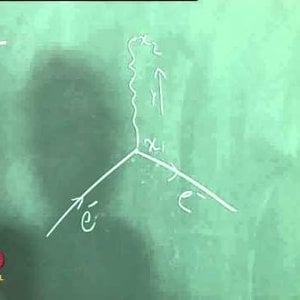
Quantum Field Theory by Dr. Prasanta Tripathy (NPTEL):- Lecture - 24: The S-Matrix Expansion in QED 2
Copyright reserved to Prof. Tripathy and NPTEL, Govt. of India. Duplication prohibited. Lectures: http://nptel.ac.in/courses/115106065/ Syllabus: http://nptel.ac.in/syllabus/syllabus.php?subjectId=115106065- Wrichik Basu
- Media item
- electron feynman rules photon qed qft
- Comments: 0
- Category: Quantum
-
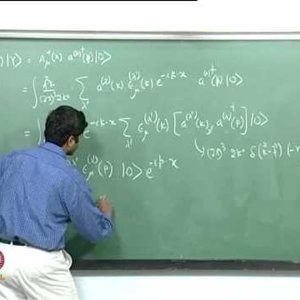
Quantum Field Theory by Dr. Prasanta Tripathy (NPTEL):- Lecture - 25: Feynman Rules in QED 1
Copyright reserved to Prof. Tripathy and NPTEL, Govt. of India. Duplication prohibited. Lectures: http://nptel.ac.in/courses/115106065/ Syllabus: http://nptel.ac.in/syllabus/syllabus.php?subjectId=115106065- Wrichik Basu
- Media item
- electron feynman rules photon qed qft
- Comments: 0
- Category: Quantum
-
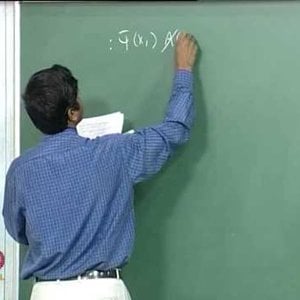
Quantum Field Theory by Dr. Prasanta Tripathy (NPTEL):- Lecture - 26: Feynman Rules in QED 2
Copyright reserved to Prof. Tripathy and NPTEL, Govt. of India. Duplication prohibited. Lectures: http://nptel.ac.in/courses/115106065/ Syllabus: http://nptel.ac.in/syllabus/syllabus.php?subjectId=115106065- Wrichik Basu
- Media item
- electron feynman rules photon qed qft
- Comments: 0
- Category: Quantum
-
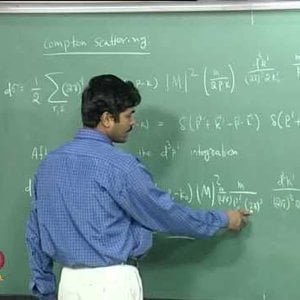
Quantum Field Theory by Dr. Prasanta Tripathy (NPTEL):- Lecture - 27: Compton Scattering 1
Copyright reserved to Prof. Tripathy and NPTEL, Govt. of India. Duplication prohibited. Lectures: http://nptel.ac.in/courses/115106065/ Syllabus: http://nptel.ac.in/syllabus/syllabus.php?subjectId=115106065- Wrichik Basu
- Media item
- electron feynman rules photon qed qft
- Comments: 0
- Category: Quantum
-
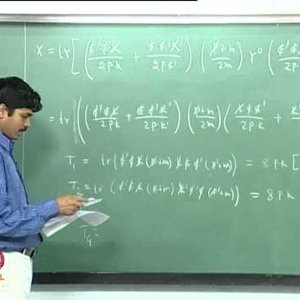
Quantum Field Theory by Dr. Prasanta Tripathy (NPTEL):- Lecture - 28: Compton Scattering 2
Copyright reserved to Prof. Tripathy and NPTEL, Govt. of India. Duplication prohibited. Lectures: http://nptel.ac.in/courses/115106065/ Syllabus: http://nptel.ac.in/syllabus/syllabus.php?subjectId=115106065- Wrichik Basu
- Media item
- electron feynman rules photon qed qft
- Comments: 0
- Category: Quantum
-
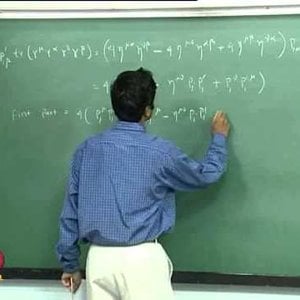
Quantum Field Theory by Dr. Prasanta Tripathy (NPTEL):- Lecture - 30: Moller Scattering 1
Copyright reserved to Prof. Tripathy and NPTEL, Govt. of India. Duplication prohibited. Lectures: http://nptel.ac.in/courses/115106065/ Syllabus: http://nptel.ac.in/syllabus/syllabus.php?subjectId=115106065- Wrichik Basu
- Media item
- electron feynman rules photon qed qft
- Comments: 0
- Category: Quantum
-
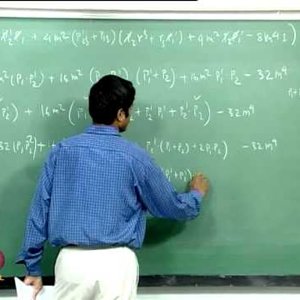
Quantum Field Theory by Dr. Prasanta Tripathy (NPTEL):- Lecture - 31: Moller Scattering 2
Copyright reserved to Prof. Tripathy and NPTEL, Govt. of India. Duplication prohibited. Lectures: http://nptel.ac.in/courses/115106065/ Syllabus: http://nptel.ac.in/syllabus/syllabus.php?subjectId=115106065- Wrichik Basu
- Media item
- electron feynman rules photon qed qft
- Comments: 0
- Category: Quantum
-
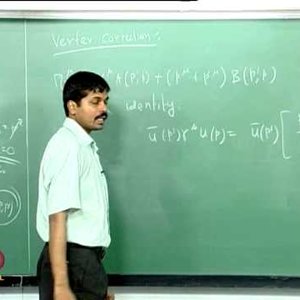
Quantum Field Theory by Dr. Prasanta Tripathy (NPTEL):- Lecture - 32: Vertex Correction 1
Copyright reserved to Prof. Tripathy and NPTEL, Govt. of India. Duplication prohibited. Lectures: http://nptel.ac.in/courses/115106065/ Syllabus: http://nptel.ac.in/syllabus/syllabus.php?subjectId=115106065- Wrichik Basu
- Media item
- electron feynman rules photon qed qft
- Comments: 0
- Category: Quantum
-
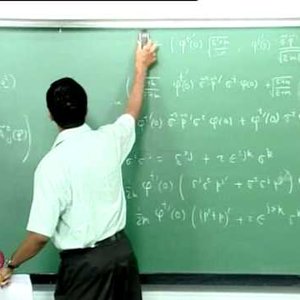
Quantum Field Theory by Dr. Prasanta Tripathy (NPTEL):- Lecture - 33: Vertex Correction 2
Copyright reserved to Prof. Tripathy and NPTEL, Govt. of India. Duplication prohibited. Lectures: http://nptel.ac.in/courses/115106065/ Syllabus: http://nptel.ac.in/syllabus/syllabus.php?subjectId=115106065- Wrichik Basu
- Media item
- electron feynman rules photon qed qft
- Comments: 0
- Category: Quantum
-
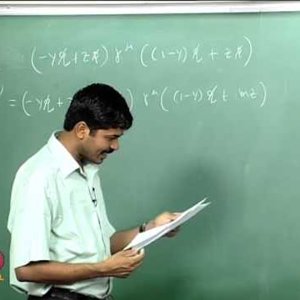
Quantum Field Theory by Dr. Prasanta Tripathy (NPTEL):- Lecture - 34: Vertex Correction 3
Copyright reserved to Prof. Tripathy and NPTEL, Govt. of India. Duplication prohibited. Lectures: http://nptel.ac.in/courses/115106065/ Syllabus: http://nptel.ac.in/syllabus/syllabus.php?subjectId=115106065- Wrichik Basu
- Media item
- electron feynman rules photon qed qft
- Comments: 0
- Category: Quantum
-
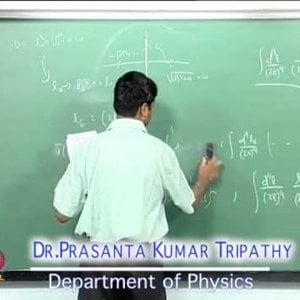
Quantum Field Theory by Dr. Prasanta Tripathy (NPTEL):- Lecture - 35: Vertex Correction 4
Copyright reserved to Prof. Tripathy and NPTEL, Govt. of India. Duplication prohibited. Lectures: http://nptel.ac.in/courses/115106065/ Syllabus: http://nptel.ac.in/syllabus/syllabus.php?subjectId=115106065- Wrichik Basu
- Media item
- electron feynman rules photon qed qft
- Comments: 0
- Category: Quantum
-
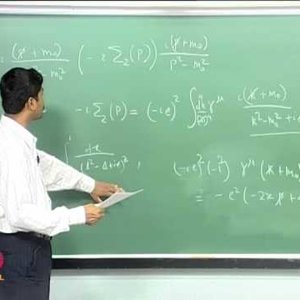
Quantum Field Theory by Dr. Prasanta Tripathy (NPTEL):- Lecture - 36: Electron Self-energy
Copyright reserved to Prof. Tripathy and NPTEL, Govt. of India. Duplication prohibited. Lectures: http://nptel.ac.in/courses/115106065/ Syllabus: http://nptel.ac.in/syllabus/syllabus.php?subjectId=115106065- Wrichik Basu
- Media item
- electron feynman rules photon qed qft
- Comments: 0
- Category: Quantum
-
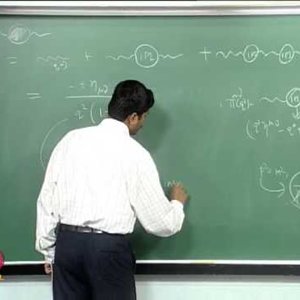
Quantum Field Theory by Dr. Prasanta Tripathy (NPTEL):- Lecture - 37: Photon Self-energy 1
Copyright reserved to Prof. Tripathy and NPTEL, Govt. of India. Duplication prohibited. Lectures: http://nptel.ac.in/courses/115106065/ Syllabus: http://nptel.ac.in/syllabus/syllabus.php?subjectId=115106065- Wrichik Basu
- Media item
- electron feynman rules photon qed qft
- Comments: 0
- Category: Quantum
-
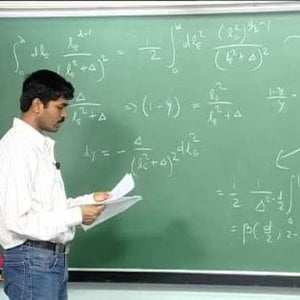
Quantum Field Theory by Dr. Prasanta Tripathy (NPTEL):- Lecture - 38: Photon Self-energy 2
Copyright reserved to Prof. Tripathy and NPTEL, Govt. of India. Duplication prohibited. Lectures: http://nptel.ac.in/courses/115106065/ Syllabus: http://nptel.ac.in/syllabus/syllabus.php?subjectId=115106065- Wrichik Basu
- Media item
- electron feynman rules photon qed qft
- Comments: 0
- Category: Quantum
-
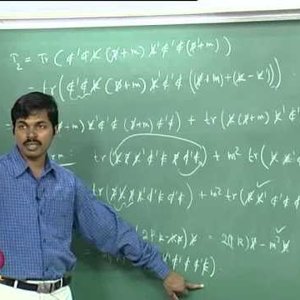
Quantum Field Theory by Dr. Prasanta Tripathy (NPTEL):- Lecture - 29: Compton Scattering 3
Copyright reserved to Prof. Tripathy and NPTEL, Govt. of India. Duplication prohibited. Lectures: http://nptel.ac.in/courses/115106065/ Syllabus: http://nptel.ac.in/syllabus/syllabus.php?subjectId=115106065- Wrichik Basu
- Media item
- electron feynman rules photon qed qft
- Comments: 0
- Category: Quantum
-
N
I Does a blueshift change the energy of a photon?
The energy of a photon depends on its wavelength, so theoretically when it is blueshifted it should have more energy right? Then what if a spaceship with a solar panel on the front is traveling towards the sun at relativistic speeds. An incoming photon undergoes a blueshift from the observer on...- Nicholas Harris
- Thread
- Replies: 22
- Forum: Special and General Relativity
-

A What's the meaning of mean photon number?
I am studying Quantum Optics. A single photon state will give the mean photon number of 1, as shown the following equation: $$<\hat{n}>=<1|\hat{n}|1>=1.$$ For a two-photon number state, the similar calculation will be $$<\hat{n}>=<2|\hat{n}|2>=2.$$ And for a coherent state, it is...- Tspirit
- Thread
- Replies: 10
- Forum: Quantum Physics
-
M
Can a photon travel slow enough to be seen by the naked eye
Please see my attachment of a recent observation of light traveling through a medium. There is no source, just my observation The packets of light appear to be visible, distinct , moving at different speeds, and display the various colours for each wavelength. Is this normal / possible in a... -
R
X-ray Flux density and a differential equation for photon scattering
Homework Statement Consider interactions of a X-ray beam at a depth, x, within a material. The flux density is: density flux = $$\frac{I}{A}$$ where I is the intensity of the beam that cross a unit area A at right angles to the beam. Let dx be a small slice at the depth x and let dI(x) be the...- razidan
- Thread
- Replies: 13
- Forum: Introductory Physics Homework Help
-
A
I Photon emission, power output (and black holes)
I recently re-read an article by Muller (https://arxiv.org/pdf/1606.07975.pdf) about the flow of time, and the possibility of time reversal given sufficient energy dissipation (basically during black hole evaporation, he concludes). Although the paper is on arXiv and not peer reviewed, Muller...- asimov42
- Thread
- Replies: 47
- Forum: Quantum Physics
-
K
B A couple of questions about photons and superposition..
There are two polarization filters, A and B. Polarization filter A has angle of 0° and B has an angle of 30°. A photon is in superposition, so it doesn't have a definite polarization axis. The likelihood it's passing through a filter is depend on the difference between angle of the...- Karagoz
- Thread
- Replies: 6
- Forum: Quantum Physics
-
A
Photon Duration & Wavelength: Exploring the Mysteries
Perhaps this a question that make no sense or has no answer but... I understand an EM wave is not like the carrier of an AM station but rather similar to a Keyed Morse Code transmission. In other words bust of trains ow waves If my description is correct How long the burst last? How many...- Averyuniquename
- Thread
-
- Tags
- Photon
- Replies: 21
- Forum: Optics
-
B
Proper time elapsed between a photon being sent and received
Homework Statement The problem I am trying to solve is the proper time elapsed along A's worldline between a photon being emitted and sent to B (which is a distance L away from it along the x axis) and being reflected and detected by A again. The question is the second part of the question...- Bailey2013
- Thread
-
- Tags
- Photon Proper time Time
- Replies: 1
- Forum: Advanced Physics Homework Help
-
Z
When a photon is created, it instantly achieves the speed of light -- How?
I've been told that when a photon of light is created it instantly achieves the speed of light without having to 'speed up". How is this possible? -

Momentum of a Photon: E/c=p Explained
Homework Statement I have been asked to calculate the momentum of a photon in that has been ejected as a gamma ray after a nucleus was excited in terms of the Energy. I am confused as to whether or not I can use two different equations Homework Equations E=mc^2 or E=hf λ=h/p The Attempt at a...- pokemon123
- Thread
- Replies: 2
- Forum: Introductory Physics Homework Help
-
K
B Probability of a photon passing through a filter
In quantum physics they say that the probability P for a photon to pass through the filter depends on the angle Φ between the photon and the filter polarization axis: P = cos^2(Φ) And if I'm not wrong, when the photon passes through that filter (like illustrated in the image above) the...- Karagoz
- Thread
-
- Tags
- Filter Photon Probability
- Replies: 5
- Forum: Quantum Physics
-
I
I Can Photons from Distant Quasars Decay into Particle Pairs in Vacuum?
When a photon emitted by a distant quasar arrives, almost certainly has an energy less than 1.02 MeV. If it had a higher value, it likely would have decayed into particle pairs on its way to the Earth. Is this reasoning correct?- intervoxel
- Thread
- Replies: 2
- Forum: Quantum Physics
-
M
I What is the Electromagnetic Wave in this Animation?
I've found this animation of an accelerated charge creating an electromagnetic wave: http://www.tapir.caltech.edu/~teviet/Waves/field_a.gif My question is regarding the perturbation I've encircled in green below: Is this what we call a photon?- marksyncm
- Thread
-
- Tags
- Photon
- Replies: 6
- Forum: Quantum Physics
-

I Require a source for a delocated photon pair
The light source in the DCQE experiment of Kim et al is a laser which illuminates two slits which are immediately followed by an SPDC. The latter is therefore excited coherently in two narrow stripes referred to as "slits". The output has a small amplitude of down-converted entangled pairs. The...- Derek P
- Thread
- Replies: 2
- Forum: Quantum Physics
-
A Field quantization and photon number operator
[Moderator's note: This thread is spun off from a previous thread since it was getting into material too technical for the original thread. The quote at the top of this post is from the previous thread.] Field quantization doesn't require a photon picture. A measurement device that creates a...- Peter Morgan
- Thread
-
- Tags
- Field Operator Photon Quantization
- Replies: 6
- Forum: Quantum Physics
-

I Photon & Electron: Photoelectric & Compton Effects
How photon transfer energy to electron in case of photoelectric effect,and compton effect. Is any high level theory which explains this scenario?- Sandeep T S
- Thread
- Replies: 30
- Forum: Quantum Physics
-

B Why can't light travel faster than c?
Photons do not have mass, so why stop at 299700 km/s??- Aarav
- Thread
- Replies: 52
- Forum: Special and General Relativity
-
R
I Why don't we ever hear about low-frequency photons?
We're told that all electromagnetic radiation consists of photons. But you never hear them mentioned when discussing low-frequency radio waves. Why not? I get that, due to the low frequencies, the energy of each individual photon would be very small, so there must be lots and lots of them flying...- Rob Lewis
- Thread
- Replies: 12
- Forum: Quantum Physics
-
E
B Proving Proper Time of Photon in Friedman Metric
If I understand it correctly, the proper time differential for a photon in flat space is zero. That is evident if the velocity of light is equal to c, so the right hand side of the Minkowski metric is equal to zero. Therefore the left side must also be zero. My question: Is the same true for...- exmarine
- Thread
-
- Tags
- Metric Photon Proper time Time
- Replies: 2
- Forum: Special and General Relativity
-
P
Photon upconversion and second law of thermodynamics
Wiki states: Photon upconversion (UC) is a process in which the sequential absorption of two or more photons leads to the emission of light at shorter wavelength than the excitation wavelength. https://en.wikipedia.org/wiki/Photon_upconversion Is it possible to have the emitted light with the...- Papatom
- Thread
- Replies: 8
- Forum: Thermodynamics
-
H
Number of Photons inside a Laser Cavity
<< Mentor Note -- thread moved from the technical forums, so no Homework Help Template is shown >> Let's say you have a laser cavity with two mirrors at either end, one is considered 100% reflective, the other 99.9%, so that a wave beam is emitted through this lower reflectivity mirror. I know...- HuskyLab
- Thread
- Replies: 5
- Forum: Introductory Physics Homework Help
-
R
Composition of Light: Questions & Answers
Hi everyone, I have a few questions about the composition of light: First, what is it? Is white light the result of all color wavelengths present in an area? Second, if so, then why is there no interference in waves of light (or is there)? Third, if photons all travel at the same speed, then...- RobertDSmeets
- Thread
- Replies: 28
- Forum: Optics
-

I Why does a photon have parity -1
I am wondering what would be an experiment demonstrating that photon parity is -1. It also occurs to me that one might deduce the parity from Maxwell's equations, though that might be a bit of a stretch since they are classical of course. Also, it occurs to me that parity might be assigned a...- Gene Naden
- Thread
- Replies: 7
- Forum: Quantum Physics
-

I Photon BEC: Hypothetical Universe End-State
If we pose a hypothetical universe end-state very cold, where only very low energy photons are left. Could these photons undergo a phase transition into something like a BEC? Would they gain invariant mass if they did (become a condensate) Could someone show why this would/would not happen...- Cory Buott
- Thread
- Replies: 2
- Forum: Atomic and Condensed Matter
-
P
A Reflection or emission of a photon
Hi, if I read the article (see link) I get confused: Is it emission or reflection? If it is emission, how is it possible that the photons are emitted to one side? (Unfortenately I do not have access to the original article.)...- Papatom
- Thread
-
- Tags
- Emission Photon Reflection
- Replies: 2
- Forum: Atomic and Condensed Matter
-
A
Do electron absorb the entire photon energy?
I couldn't type the whole question | -or jusg part of the spectrum during the working of a solar panel- Aliam1
- Thread
- Replies: 1
- Forum: Electromagnetism
-
K
A Two-Photon Excitation: Theory and Applications
Maria Goeppert-Mayer described the theoretical foundation for 2-photon excitation and it was later proven correct with the advent of lasers. Today, two-photon microscopy uses this quantum physics principle. For example, if you want to excite a fluorophore that has an excitation peak at 495...- kmcguir
- Thread
-
- Tags
- Excitation Photon
- Replies: 3
- Forum: Quantum Physics
-
C
I Time Delay on Multiple Photons when travelling from one plac
I'm trying to understand the time delay induced on each photon when several individual photons travel in an open space from a sender to a receiver for example in the application of Quantum Key Distribution. So what I understand so far is light(photon) travel around 299,792 km (186,282 miles) per...- Cael
- Thread
- Replies: 5
- Forum: Quantum Physics
-
J
I What are the differences between photon and neutrino oscillations?
i'm wondering about the differences in oscillations between a photon and neutrino, does a neutrino have a wider probability range (or a greater amplitude for a possible location than does a photon) how do the probability ranges for a photon and a neutrino compare when not looking at wavelength...- jojoistherealking
- Thread
-
- Tags
- Neutrino Oscillations Photon
- Replies: 3
- Forum: High Energy, Nuclear, Particle Physics
-

B Can FTL Travel be Achieved With Mass of a Photon?
Really silly question, but if we assume that our current science is correct, is it plausible that we can move faster than light in a vacuum? Say, for example, can we make the mass of something less than a photon so it then can it move faster than light in a vacuum. I know this sounds like a...- Lunct
- Thread
-
- Tags
- Ftl Mass Photon Speed of light Travel
- Replies: 13
- Forum: Special and General Relativity
-
D
Intro Physics Photon and charged particle interactions with matter
I am about to teach some of an introductory course for bachelor students in the field of medical physics. More specifically the topic "Photon and charged particle interactions with matter" in respect to radiation therapy (again, medical physics). I know there are a lot of topics within radiation...- Denver Dang
- Thread
- Replies: 2
- Forum: Science and Math Textbooks
-

Insights The Schwarzschild Metric: Part 2, The Photon Sphere - Comments
Greg Bernhardt submitted a new PF Insights post The Schwarzschild Metric: Part 2, The Photon Sphere Continue reading the Original PF Insights Post.- RUTA
- Thread
- Replies: 2
- Forum: Special and General Relativity
-

Change in the energy of photon due to recoil of the nucleus
Homework Statement Homework EquationsThe Attempt at a Solution Since energy of photon is very low compared to the rest mass energy of the nucleus, I consider non – relativistic calculation. Conservation of linear momentum gives : momentum of nucleus = momentum of photon = p...(1)...- Pushoam
- Thread
- Replies: 2
- Forum: Introductory Physics Homework Help
-

Photon absorbtion and conservation
If a (polarized) photon is absorbed by a polarization filter, does its energy go into the filter? I am wondering if that is the case to obey conservation laws. And if it passes, is its original polarisation direction somehow conserved?